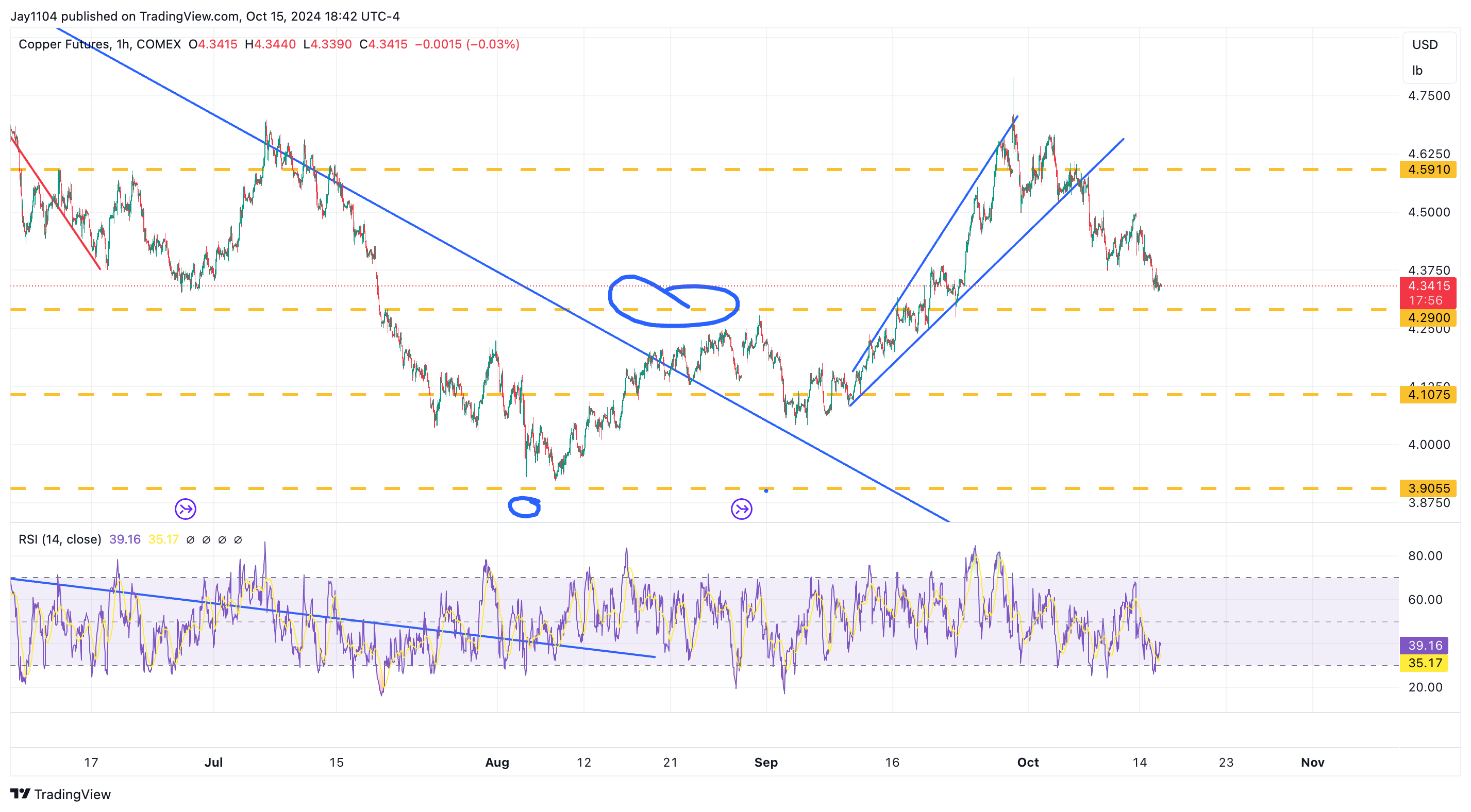The NASDAQ 100 fell by 1.5% yesterday, led lower by the semiconductor sector, with the SMH ETF dropping by more than 5%.
This meant that the index broke below its uptrend, which could be part of a rising wedge or a bump-and-run pattern. If this break holds, it could signal a lower move from current levels.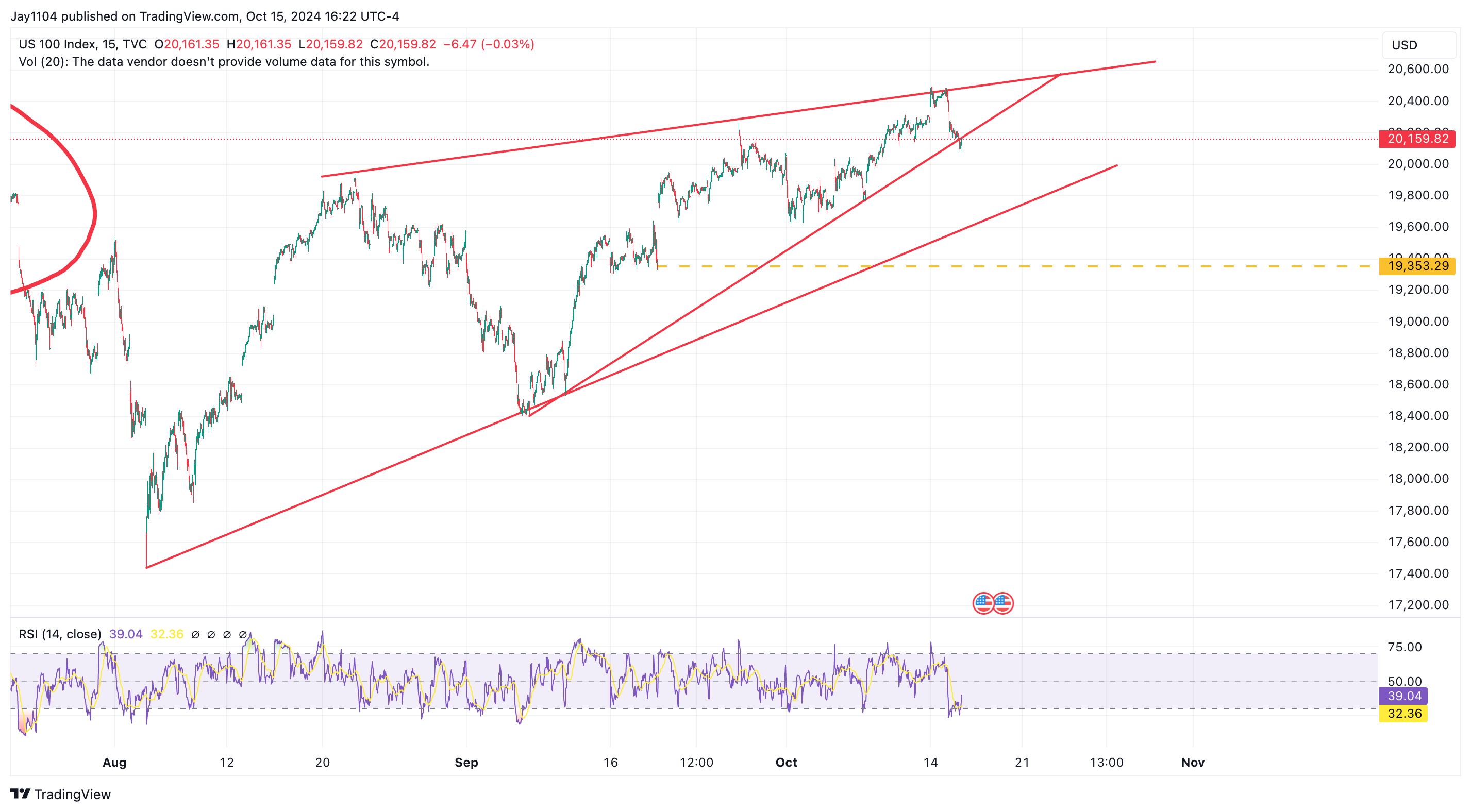
The RSP (Equal Weight S&P 500 ETF) also has a rising wedge pattern forming, and if this pattern plays out correctly, the move higher may be nearing its end.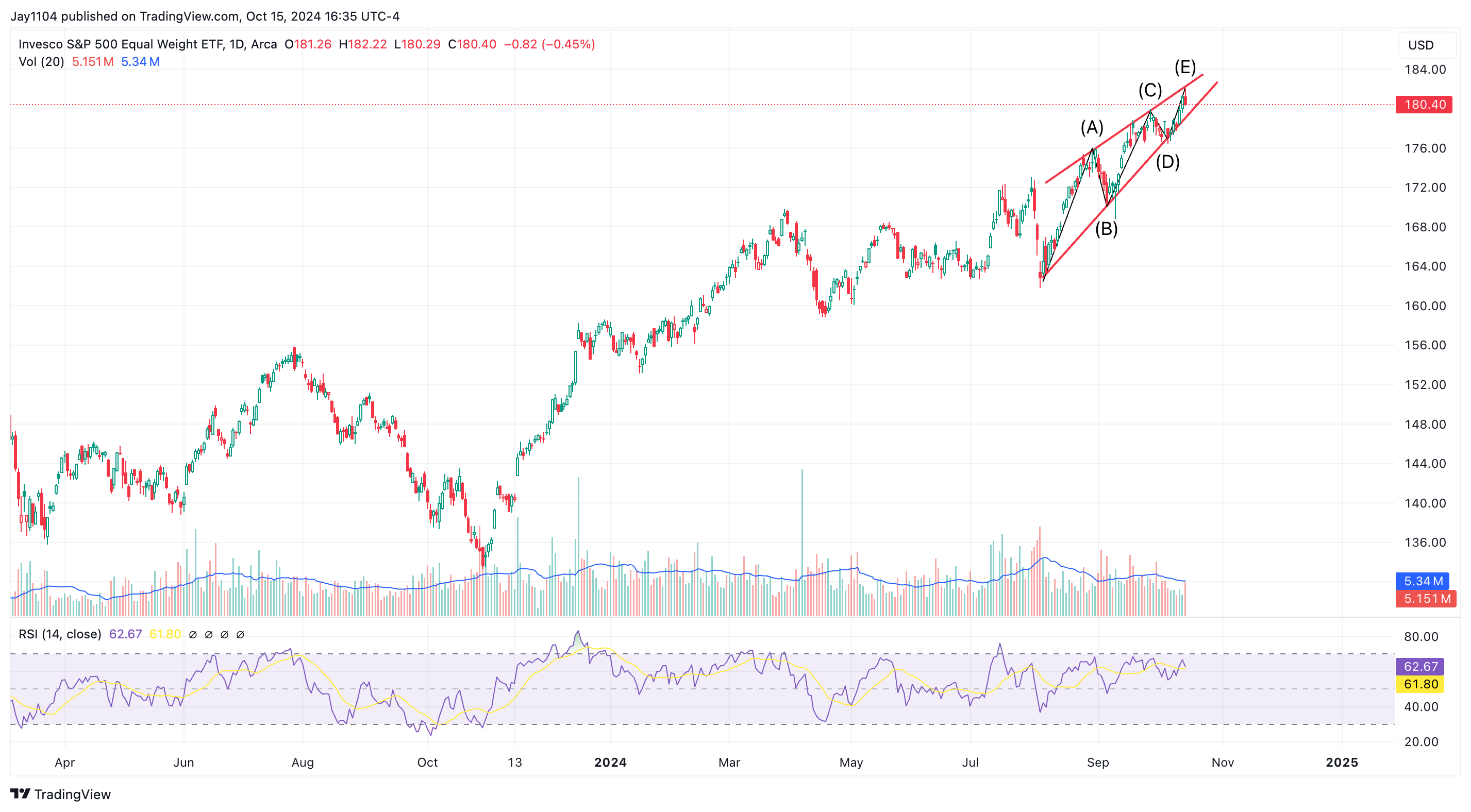
The Dow Jones Industrial Average also presents the same rising wedge pattern. If this pattern holds, the move higher could also be coming to an end there.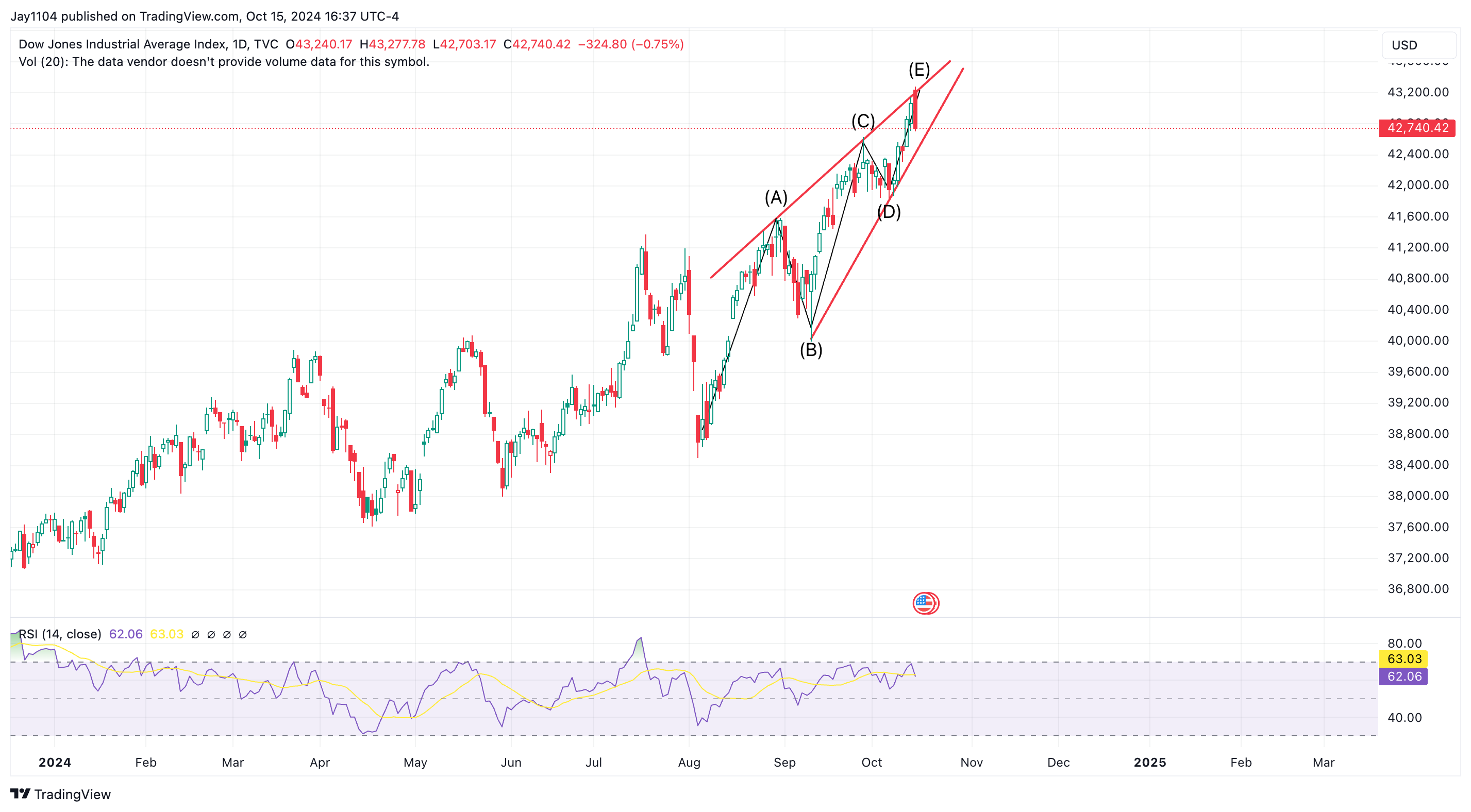
This decline was driven by a more than 16% drop in ASML (AS:ASML), which reported weaker-than-expected bookings for the third quarter and provided a softer-than-expected outlook for 2025.
ASML (NASDAQ:ASML), a stock up by almost 50% earlier this year, is now down by around 2% for the year, meaning all of its earlier gains have been erased.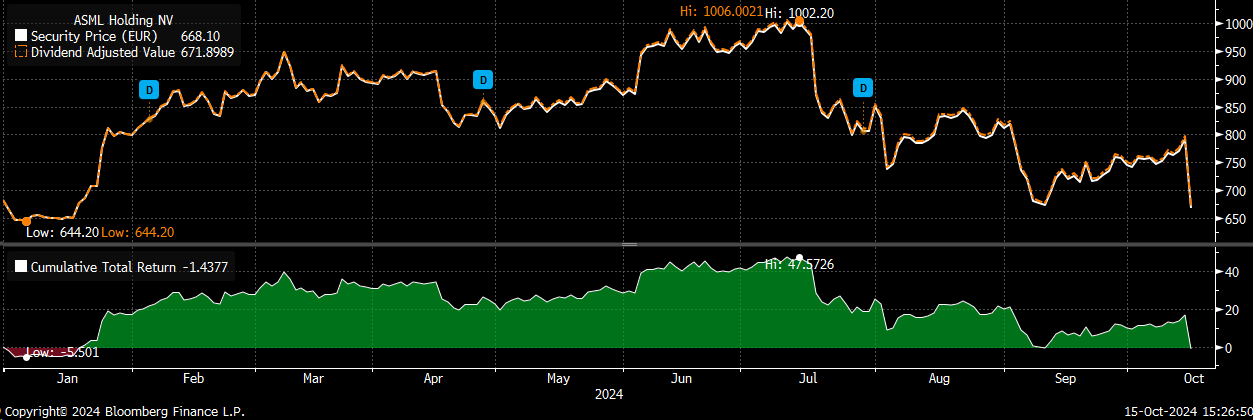
The SMH ETF was weighed down all day by the drop in ASML, leading to a nearly 6% decline.
The big question now is what happens next. Yesterday, there was an attempt to break the SMH out above the top of the triangle pattern, but yesterday, the SMH fell back into the range and broke through the lower trend line.
If the day before yesterday’s rally was a throwover (a false breakout), and yesterday’s move is the real direction, then the SMH could have much further to fall from current levels, with the next support zone somewhere in the low $230s.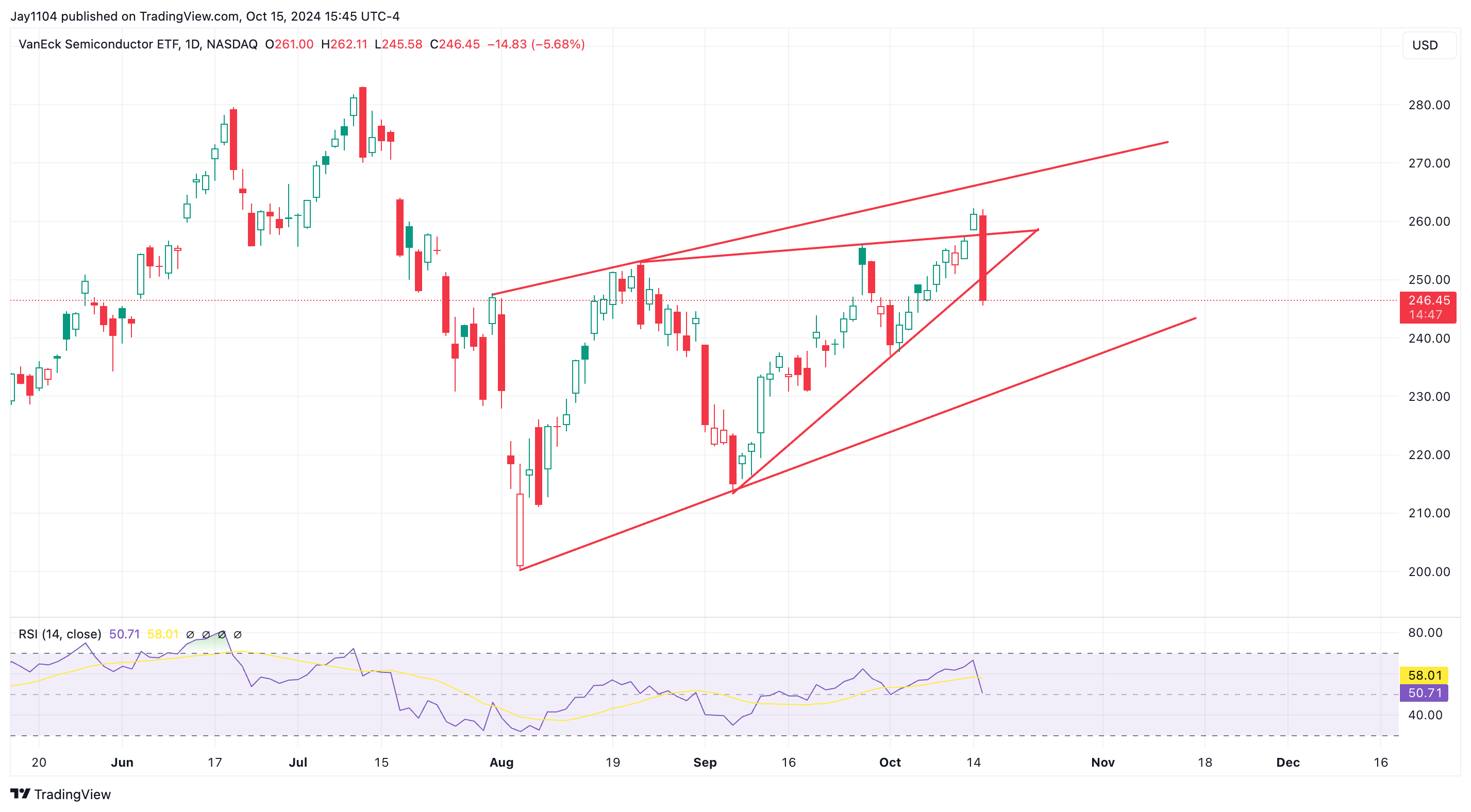
Chinese Stocks Unimpressed by Stimulus
Meanwhile, Hong Kong is expected to open lower again, with Hang Seng futures down by more than 1% yesterday. So far, the market hasn’t been overly impressed by China’s “Bazooka” stimulus.
Since the last press engagement failed to boost market sentiment, China’s housing ministry, MOF (Ministry of Finance), and PBOC (People’s Bank of China) are scheduled to hold another briefing on Thursday.
If this meeting goes as poorly as the previous ones, the 20,000 level on Hang Seng futures becomes critical. A break below this support could lead to a move into the 18,000 range.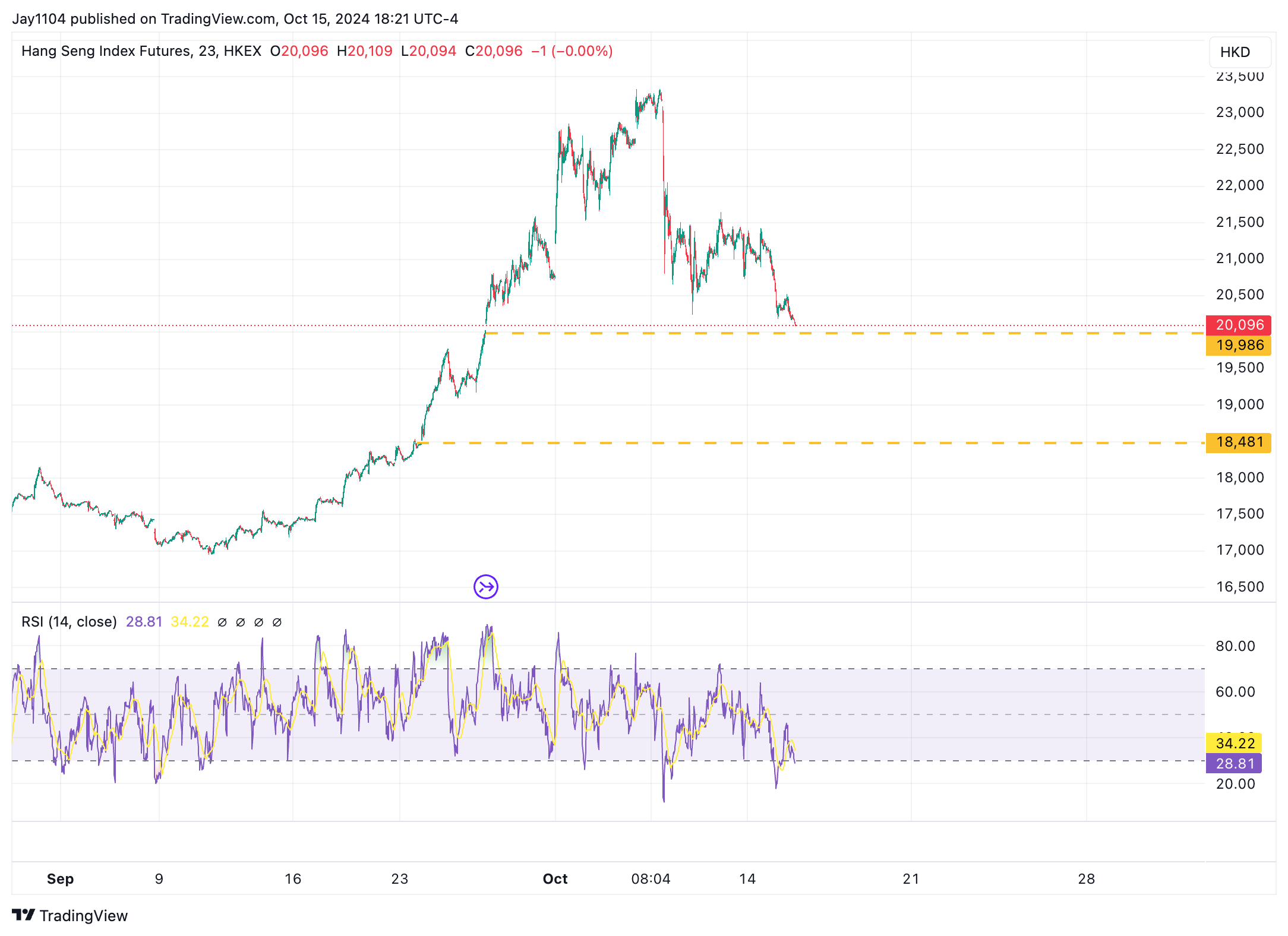
Certainly, based on how copper has been trading, it seems the market believes that China hasn’t fired a “Bazooka” at all.
Copper prices look like they could move lower from current levels. The critical level to watch is $4.29. If copper falls below this support, the next move could take it down to $4.10.